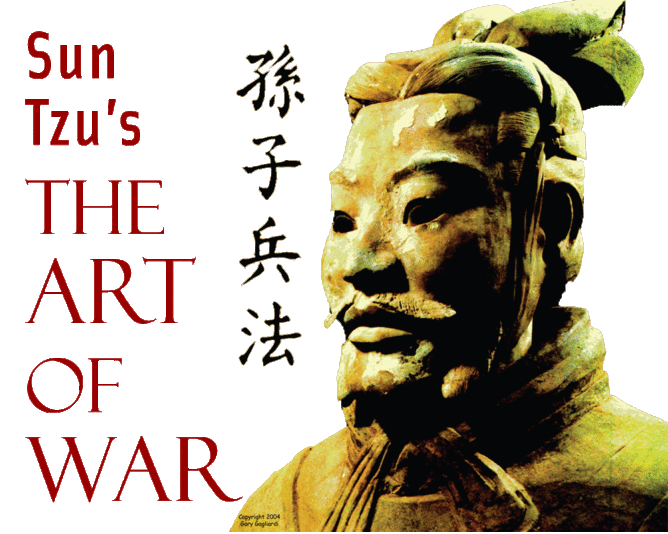“The Art of War” is a comprehensive treatise on strategy, encompassing concepts such as seizing opportunities, exercising patience, meticulous planning, astute positioning, and achieving victory by any means, particularly within the context of warfare. There exists a wealth of material dedicated to Sun Tzu’s “Art of War,” but I will endeavor to confine my discussion to elements pertinent to our text, which may also complement our overarching learning objectives.
While accounts vary regarding Sun Tzu’s origins, a biography authored by a 2nd-century BC historian describes him as a general who lived in the state of Wu during the 6th century BC. Sun Tzu is renowned primarily for his “Art of War,” hailed as the definitive work on military strategy and tactics prior to the downfall of imperial China (Discovery Channel).
In 1990, I had the privilege of working under one of my earliest mentors, Ronald Ching, a native of Hawaii. On one occasion, Ron presented me with “The Art of War” and suggested that, as a Marine, I would find its lessons highly valuable. He was absolutely correct. Over the past 21 years, I have frequently referenced “The Art of War.” I firmly believe that this book should be mandatory reading for military officers.
Approximately 2,500 years ago, a Chinese warrior and philosopher named Sun Tzu achieved the status of a grand master of strategy, encapsulating his philosophies within a tome known in English-speaking nations as “Sun Tzu on the Art of War.” To this day, military strategists worldwide have employed Sun Tzu’s teachings to secure victories in conflicts, making “Sun Tzu on the Art of War” a cornerstone of military education.
Those seeking insights into strategy for business, law, and life have also turned to “Sun Tzu on the Art of War” for its wisdom. At the core of Sun Tzu’s philosophies lie strategies for effective and efficient conflict resolution, invaluable to anyone aiming to gain an upper hand over their adversaries (Cantrell).
Translations of Sun Tzu’s text disseminated throughout Asia, becoming an integral part of Japanese military philosophy alongside China’s own. Undoubtedly, these ideas influenced battle strategies, including the surprise attack on Pearl Harbor in 1941 (I never knew that).
Some military historians posit that Napoleon incorporated Sun Tzu’s philosophies into his military planning, even reportedly carrying a copy of Sun Tzu’s book during his campaigns.
The U.S. Marine Corps’ manual on strategy, “Warfighting,” builds upon ideas of maneuver warfare directly drawn from “Sun Tzu on the Art of War” (Cantrell).
Sun Tzu (544-496 BC) penned the original text of “The Art of War” shortly before 510 BC. For most of the past two millennia, common people in China were forbidden from reading Sun Tzu’s work. However, the text was preserved by China’s nobility for over 2,500 years, albeit in various forms. A “complete” Chinese-language version of the text did not become available until the 1970s, as prior to that, conflicting and fragmentary versions existed in different regions of China, passed down through 125 generations of duplication (“Sun Tzu’s the,” ).
Legend has it that Sun Tzu was born into minor nobility in what is now Shandong, a region north of Shanghai known for Confucius and delectable Shandong Chicken. Born as “Sun Wu,” he received a quality education and, like Machiavelli, wrote a military treatise in a bid to attract attention and employment from royalty. Unlike Machiavelli, his endeavor proved successful.
Sun Wu expanded his initial 13-chapter “Art of War” into 82 chapters and trained his army. Eventually, he disrupted the peace by invading the southern state of Yue, leading to subsequent conflicts. Even when facing overwhelming odds, such as being outnumbered 30,000 to 200,000, he consistently emerged victorious. Many successes followed, and some even believed his death to be another strategic ruse.
However, the kingdom was eventually defeated several years after his reported demise. Just over a century later, his descendant, Sun Bing, led troops to victory once again and authored his own treatise. To honor his status as a philosophy master, Sun Wu’s name was changed to “Sun Tzu on the Art of War” (“About Sun Tzu,” ).
I believe the primary message conveyed by the book is the importance of preparedness, self-awareness, and understanding one’s adversaries before engaging in battle or competition. Personally, I find value in Sun Tzu’s composed demeanor. Through his writings, he portrays himself as a general who exudes confidence and dedication to study. While I cannot ascertain how faithfully the stories and translations over the centuries have preserved his original thoughts on warfare, “The Art of War” remains an invaluable resource for military strategists, compelling them to contemplate broad strategic scenarios. For instance, Sun Tzu advises against cornering one’s enemy, as they will fight their way out in desperation. Instead, always offer them an avenue of escape. His book abounds with references that have been quoted by numerous military scholars in their own documents.
Today, Sun Tzu’s work has found diverse applications in realms far removed from its original military context, serving as a guide in business, sports, diplomacy, and even dating!
In conclusion, whenever I encounter the name Sun Tzu or any mention of “The Art of War,” my thoughts invariably turn to my esteemed friend and mentor, Ron Ching, who introduced me to the profound wisdom of Sun Tzu back in 1990. Sun Tzu, the illustrious general from the 6th century BC who hailed from the state of Wu, continues to leave an indelible mark on our understanding of strategy and warfare.

 Our legacy lives through the stories we tell. The Suck Life wants yours! Make Chesty proud!
Our legacy lives through the stories we tell. The Suck Life wants yours! Make Chesty proud!



 Semper Fidelis
Semper Fidelis




[…] picture taken from here […]